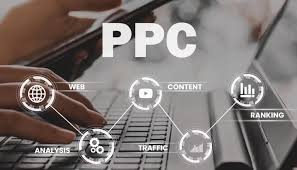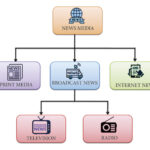
Introduction
In the world of digital marketing, Pay-Per-Click (PPC) advertising stands as one of the most effective strategies for driving traffic, generating leads, and increasing conversions. PPC allows businesses to place ads on search engines, social media platforms, and other websites while paying only when users click on their ads. This guide will explore the importance of PPC, its key components, best practices, and future trends.
What is Pay-Per-Click (PPC) Advertising?
PPC is a digital marketing model where advertisers pay a fee each time their ad is clicked. It is commonly used in search engine advertising (Google Ads, Bing Ads) and social media marketing (Facebook Ads, LinkedIn Ads). PPC provides businesses with immediate visibility and allows for targeted marketing based on user intent, demographics, and behaviors.
Importance of PPC Advertising
Instant Traffic: PPC delivers quick results compared to organic SEO efforts.
Highly Targeted: Advertisers can target specific keywords, locations, devices, and audience segments.
Measurable Results: PPC platforms provide analytics to track performance.
Cost Control: Budgets can be adjusted based on performance.
Brand Exposure: Even if users don’t click, PPC ads increase brand visibility.
Key Components of PPC Advertising
1. Keyword Research
Effective PPC campaigns rely on well-researched keywords that match user intent.
Short-Tail Keywords: Broad and high-competition keywords.
Long-Tail Keywords: More specific and lower-cost keywords.
Negative Keywords: Words that prevent ads from showing in irrelevant searches.
2. Ad Copy and Design
Well-crafted ads increase click-through rates (CTR) and conversions.
Compelling Headlines: Attention-grabbing and keyword-rich.
Engaging Descriptions: Highlight benefits and unique selling points.
Call-to-Action (CTA): Encourages users to take immediate action.
Ad Extensions: Additional links, phone numbers, and promotions.
3. Landing Pages
A well-optimized landing page enhances the user experience and increases conversions.
Relevance: Matches the ad’s message and intent.
Fast Loading Speed: Reduces bounce rates and improves rankings.
Clear CTA: Guides users towards the desired action.
4. Bidding Strategies
Setting the right bidding strategy determines ad placement and cost efficiency.
Manual Bidding: Advertisers set their own maximum CPC (cost-per-click).
Automated Bidding: AI-driven optimization for conversions.
Cost-Per-Mille (CPM): Paying per thousand impressions instead of clicks.
5. PPC Platforms
Different platforms cater to various advertising goals.
Google Ads: Dominates search engine marketing.
Facebook Ads: Best for social engagement and brand awareness.
LinkedIn Ads: Ideal for B2B marketing.
Amazon Ads: Effective for e-commerce businesses.
Best Practices for a Successful PPC Campaign
A/B Testing: Experiment with different ad variations.
Quality Score Optimization: Improve ad relevance and landing page experience.
Geo-Targeting: Focus on specific locations for better ROI.
Mobile Optimization: Ensure ads and landing pages are mobile-friendly.
Regular Performance Analysis: Monitor CTR, CPC, and conversion rates.
Future Trends in PPC Advertising
AI-Powered Automation: Smarter bidding and audience targeting.
Voice Search Integration: Optimizing ads for voice-based queries.
Video Ads Expansion: Increased adoption of video-based PPC ads.
Personalized Ad Experiences: AI-driven customization for users.
Privacy-First Advertising: Adapting to cookie-less tracking and data regulations.
Conclusion
Pay-Per-Click (PPC) advertising is a powerful tool for businesses looking to increase online visibility, generate leads, and drive sales. By understanding the key components, leveraging the right platforms, and continuously optimizing campaigns, businesses can achieve significant growth. Whether you are new to PPC or looking to refine your strategy, staying updated with industry trends will ensure long-term success.











